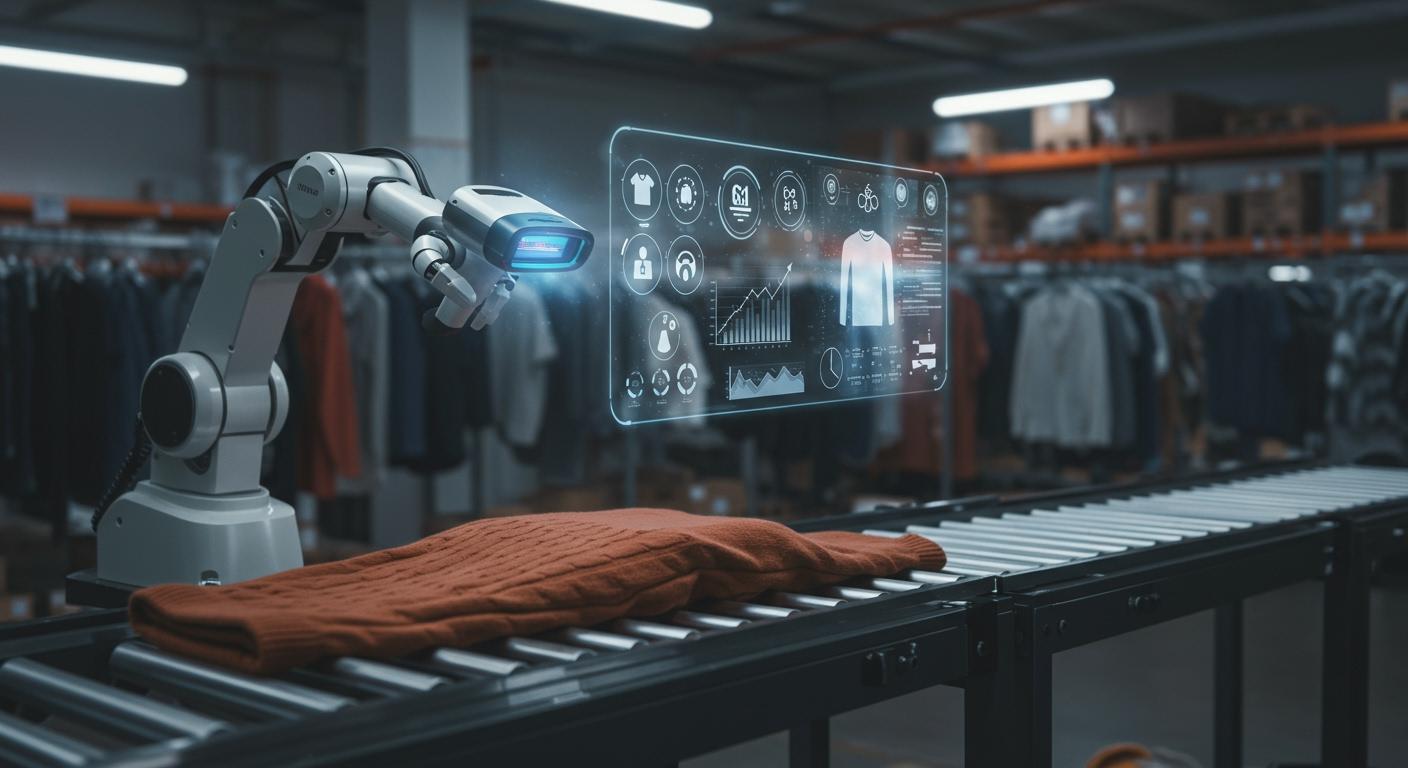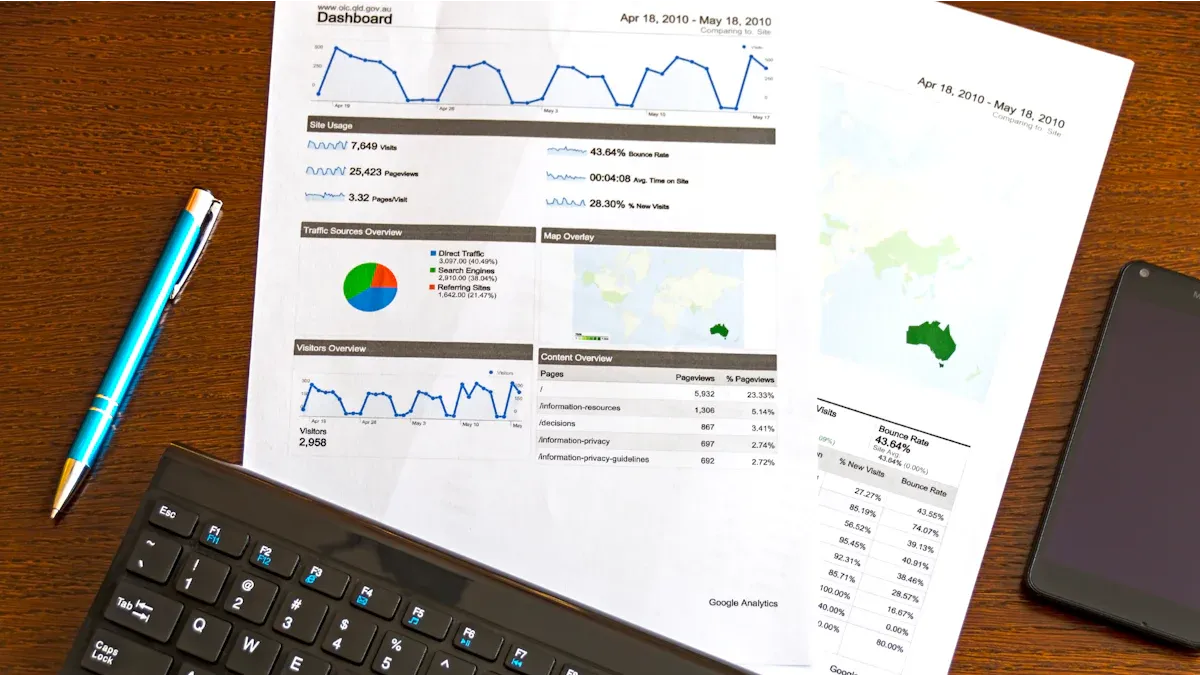
High return volumes in e-commerce drain profits, costing brands $5 to $10 for every $100 in sales. Many of these returns stem from fit issues, a primary driver of customer dissatisfaction.
The clothing sector faces the highest rates, with average online returns hovering between 20% and 30%.
Technology-driven solutions are available to combat this. Brands can use AI to streamline returns with a two-part strategy. First, artificial intelligence helps prevent these costly returns before they happen. Second, it optimizes the return process for unavoidable returns through intelligent returns management and reverse logistics. This AI approach provides an enhanced customer experience and is accessible today.
Use AI to Streamline Returns Proactively

The best return is one that never happens. Proactive strategies use artificial intelligence to align customer expectations with product reality, significantly reducing the chance of a return. This approach tackles the root causes of high return volumes, such as poor fit and mismatched expectations. Using ai to streamline returns before an order is even placed is the most effective form of returns management.
AI Sizing and Fit Tools
Incorrect sizing is the top reason for returns in fashion e-commerce. AI sizing and fit tools offer powerful solutions to this problem. These tools analyze customer data to provide highly accurate size recommendations, building shopper confidence and reducing size-related returns.
- Measmerize uses custom AI algorithms and SKU data to suggest the right size.
- Sizekick combines user body measurements from a smartphone camera with over 75 years of fit expertise to deliver precise recommendations.
This technology directly impacts a brand's bottom line. Studies show that implementing AI fit tools leads to a significant drop in returns across various product categories.
| Product Category | Average Return Rate Reduction |
|---|---|
| Women's Underwear | -19.7% |
| Women's Leggings | -16.2% |
| Women's Sneakers | -16.5% |
| Overall Women's Average | -17.95% |
| Overall Footwear Average | -16.5% |
These tools work by capturing detailed body profiles. For example, 3DLOOK's Mobile Tailor creates a 3D body model with over 85 measurements from just two photos. Similarly, Parallel's Perfect Fit tool uses computer vision to analyze thousands of data points from photos, comparing a user's profile against purchase and return feedback to find the perfect size.
Virtual Try-On Technology
Virtual try-on (VTO) technology allows customers to see how a product looks on them without physically touching it. Augmented reality (AR) and AI create these immersive experiences. Brands like Zara and Gucci use VTO to simulate clothing and accessories on diverse virtual models. This technology bridges the gap between online and in-store shopping.
A NielsenIQ survey found that 61% of consumers prefer shopping at retailers that offer AR experiences.
The impact on key business metrics is substantial. VTO can dramatically lower returns and boost sales.
| Metric | Impact | Source |
|---|---|---|
| Return rate reduction | 20-30% | Accenture, 2025 |
| Conversion rate increase | 15-40% | Retail Dive, 2025 |
AR enhances the experience by overlaying digital items onto a user's image via their smartphone. This allows shoppers to view products from every angle, building trust and confidence. Companies like Warby Parker use AR for trying on glasses, while ASOS uses it to show products on various body types. This interactive element makes the shopping experience more compelling and informed, which is key for returns process optimization.
Predictive Product Descriptions
Vague or inaccurate product descriptions are another major cause of returns. AI, specifically Natural Language Generation (NLG), creates clear, detailed, and persuasive descriptions at scale. NLG software analyzes structured product data to generate unique narratives for thousands of items. This process saves time and ensures consistency.
AI also improves descriptions by analyzing customer feedback. For instance, an AI can scan thousands of reviews and identify that 40% of negative comments mention sizing issues. This insight prompts the brand to update its size guide and add customer photos, making the product page more helpful and reducing future returns.
The Role of Artificial Intelligence in Imagery
"What you see is what you get" is a core promise of e-commerce. AI helps brands deliver on this promise with better product visuals. AI generates realistic on-model imagery using technologies like Generative Adversarial Networks (GANs). This allows brands to showcase clothing on models with diverse body types, heights, and ethnicities, giving shoppers a better idea of fit.
AI tools also enhance product photos to represent fabric and color more accurately.
- OpenArt can change the texture in an image to make product photos more eye-catching.
- Pebblely allows users to generate images with specific brand colors, ensuring visual consistency.
These visual enhancements help customers make more informed decisions, reducing the likelihood of a return due to a product not matching its online image.
Analyzing Customer Returns Data
To prevent future returns, brands must understand why past ones happened. AI excels at analyzing returns data to uncover deep insights. Platforms like Newmine and Returnalyze are designed for this purpose. They use AI to analyze sales, returns, and customer feedback to find the root causes of returns. This goes beyond simple reason codes.
AI uses different methods for data analytics and insights.
| AI Method | Best For |
|---|---|
| Clustering Algorithms | Finding natural groupings in return data |
| Regression Analysis | Predicting return likelihood |
| Neural Networks | Complex pattern recognition |
| Natural Language Processing | Extracting insights from customer comments |
Natural Language Processing (NLP) can scan thousands of written comments in the return process, identifying trends that a human analyst might miss. For example, it can connect "wrong size" returns to a specific product worn with thick winter socks. This level of analysis helps brands fix underlying issues with products, descriptions, and even their reverse logistics chain. By understanding the "why" behind every reverse shipment, companies can make strategic changes. This is how ai to streamline returns becomes a cycle of continuous improvement, optimizing both the customer experience and the reverse flow of goods.
Optimize Reverse Logistics with AI

While proactive strategies reduce the volume of returns, some are simply unavoidable. This is where AI in reverse logistics transforms a costly problem into a streamlined operation. Smart reverse logistics uses artificial intelligence to manage the journey of a returned product efficiently from the customer back to the business. This process ensures that every item is handled quickly, intelligently, and cost-effectively.
Intelligent Disposition Routing
Once a customer initiates a return, the first question is: where should the item go? Intelligent disposition routing provides the answer. AI algorithms analyze multiple data points to determine the optimal destination for each product. This technology moves beyond simple "return to stock" rules.
AI makes these smart disposition decisions by considering several factors:
- Product Condition: Computer vision systems assess images of the returned item to grade its quality and check for damage.
- Historical Data: The system analyzes the product's return history, customer information, and original purchase details.
- Resale Value: AI calculates the potential resale value to decide if an item should be restocked, sent to an outlet, or refurbished.
Based on this analysis, AI-powered returns management systems automatically direct products to the most suitable location. This could be a primary warehouse for immediate resale, a refurbishment center for minor repairs, a resale outlet for discounted sales, or a recycling facility. This automated decision-making for optimizing return routing is a core component of modern reverse logistics.
Automated Inspection and Grading
Manual inspection of returns is slow, expensive, and prone to human error. AI-powered inspection systems use computer vision to automate and improve this critical step. This technology quickly inspects returned items for damage or wear, assessing their suitability for resale with incredible precision.
AI systems maintain defect detection accuracy rates above 90%. They can spot fabric snags as small as 0.1 millimeters or faint color deviations that the human eye might miss.
This level of accuracy is a significant improvement over manual methods. Human inspectors can miss up to 30% of subtle defects after just a few hours of repetitive work. By automating inspection, brands accelerate the entire return process, reduce labor costs, and ensure that only high-quality items are put back into inventory. This leads to better returns process optimization and higher customer satisfaction with future purchases.
AI-Powered Fraud Detection
Return fraud, including practices like 'wardrobing' (wearing an item once and returning it), costs retailers billions annually. AI offers powerful solutions to identify and prevent this abuse. AI tools analyze customer behavior to establish patterns for both normal and fraudulent returns.
Modern fraud detection systems use machine learning to spot suspicious activity in real-time.
| Fraud Detection Method | How AI Uses It |
|---|---|
| Behavioral Analysis | Identifies customers with unusually high return frequencies or values. |
| Wear Pattern Analysis | Uses computer vision to detect if an item shows usage inconsistent with its claimed purchase date. |
| Anomaly Detection | Flags unusual patterns, such as subtle product alterations or scripted return reasons. |
Software solutions like Cahoot use AI to flag high-risk returns before they even reach the warehouse. The system can assign a fraud risk score based on customer history and return data. High-risk returns can then trigger a request for photo verification or a manual review. This proactive approach helps brands differentiate between honest mistakes and deceptive fraud, protecting their bottom line.
Smarter Returns Management
Effective returns management creates a better experience for both the customer and the retailer. AI streamlines this entire workflow, from initiating the return to processing the refund. This creates simplified return processes that build customer loyalty.
AI chatbots are a key part of this strategy. For example, H&M uses an AI agent to handle common customer queries about its return policy. This solution resolves 80% of inquiries without human help, operating 24/7. These bots can guide customers, issue return labels, and provide real-time return tracking information once a package is shipped.
Behind the scenes, AI optimizes the physical movement of goods. AI-first algorithms analyze package details, carrier performance, and real-time traffic data to select the most efficient shipping routes. This advanced route planning reduces fuel consumption and operational costs. Convoy’s Automated Reloads Program, for instance, cut empty-mile emissions by 45% by using AI to bundle shipments. This is a prime example of how ai to streamline returns also supports a focus on sustainability.
AI-Driven Resale and Re-commerce
Not all returns can go back on the primary shelf. AI helps brands capture value from these items through resale and re-commerce, supporting circular economy principles. This approach gives products a second life instead of sending them to a landfill, which aligns with a focus on sustainability.
AI plays a crucial role in dynamically pricing these returned items for second-hand marketplaces. Algorithms analyze market signals, seasonal shifts, and buyer demand to set the optimal price. This ensures items sell quickly at the highest possible value.
Several platforms now use AI to help brands manage their own re-commerce channels.
- Trove
- ThredUp
- Reverse.supply
- Archive
These platforms provide the technology and logistics to handle everything from trade-ins to processing and sales. By embracing AI-driven resale, fashion brands can create new revenue streams from their reverse logistics chain and strengthen their commitment to a more sustainable e-commerce ecosystem.
AI offers powerful, two-part solutions for the e-commerce returns problem. Brands can prevent returns with tools like virtual try-on and optimize the reverse flow of goods with smart reverse logistics. It is time for fashion leaders to stop viewing the return process as a cost. Instead, they should use AI to streamline returns, turning the reverse journey into a strategic, data-driven part of the business.
AI will continue to enhance the circular economy by:
- Improving design for long-lasting garments.
- Eliminating waste through better demand forecasting.
- Reducing transport emissions with smarter reverse routing.
FAQ
How does AI help with fashion returns?
AI offers a two-part solution. It first prevents returns using tools like virtual try-on and accurate sizing. It then optimizes the handling of unavoidable returns through smart logistics. This dual approach boosts efficiency and improves the customer experience.
Is AI for returns only for big companies?
No, this technology is becoming more accessible. Many AI solutions offer scalable pricing models, allowing small and medium-sized brands to implement these powerful tools. They can compete more effectively by reducing return costs and improving customer satisfaction.
What is intelligent disposition routing?
It is an AI-powered process. The system decides the best destination for a returned item. It analyzes product condition, resale value, and inventory needs. This sends items to the right place, like back to stock, an outlet, or a recycling center.
How does AI improve sustainability in fashion? ♻️
AI supports a circular economy. It helps brands resell returned items instead of sending them to landfills. Smart routing also reduces transport emissions. Better demand forecasting and sizing tools reduce overproduction and waste from the start.
See Also
AI's Sustainable Fashion Solutions: Paving the Way for a Greener Future
Fashion Retail's Future: Predictive Models Shaping 2025 Trends
AI's Role in Managing Viral Trends Within the Fast Fashion Industry
Machine Learning: Predicting Fashion Trends to Significantly Boost Retail Sales
Achieving Equilibrium: Predictive Analytics Optimizes Fashion Supply and Demand